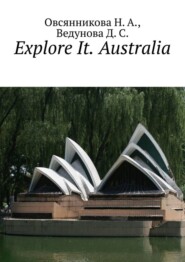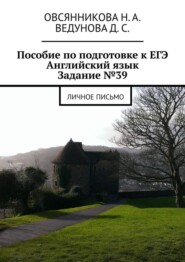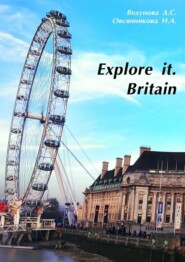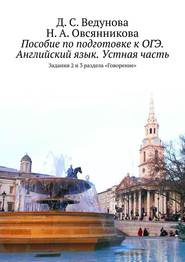По всем вопросам обращайтесь на: info@litportal.ru
(©) 2003-2024.
✖
Explore it. Britain. Part 2
Настройки чтения
Размер шрифта
Высота строк
Поля
Functions of the House of Lords can be summarized into three main groups: 1) legislation; 2) control; 3) court.
Legislative functions are carried out through participation in the legislative process, in particular in the following forms:
a) Amendments to the bills passed by the House of Commons;
b) Rejection of bills adopted by the House of Commons; c) is bills providing for endorsement by the International Treaties of Great Britain or received as part of legal reform, especially with regard to participation in the EU; d) the study of private bills and acts delegated legislation.
Control functions are manifested in the practice of ministers of the Government and the establishment of ad hoc committees to study the issues involved. Following discussions Lords informs the public and the Government.
The legislative process is to review in accordance with the procedure established by laws, which may be made in any of the Houses of Parliament. The exception is financial bills introduced only in the House of Commons.
Types of bills are under consideration in Parliament. Bills under consideration in the Parliament chambers, called Billy. They can be divided into three groups:
Public bills (Public Bills) – This is a bill for the great public importance of the issues, to regulate relations of general interest. The initiators of the introduction of public bills are members of both chambers of deputies – members of the Government. A bill introduced last, referred to as “Government Bill” and have precedence in the consideration of the House;
Private bills (Private Bills) are the laws governing the issues that affect the interests of a certain group or population of a certain territory. The initiators of private bills are usually local authorities or associations of persons. In the case of private bills to the special procedure for consideration and adoption;
Mixed bills (Hybrid Bills) – This is a bill that combines elements of both public and private bills. The criteria for determining a mixed bill is not clearly regulated. The general rule is to have a great social importance of the bill and the fact that at the same time it affects the interests of certain specific groups of individuals. However, the practice develops very contradictory. For example, a bill to nationalize the Bank of England was accepted as a mixed bill, and bills on the nationalization of the gas, electricity and coal industries as public bills.
Bills are considered in three readings. In the first reading, as a rule, announced the name of the bill, then it will be printed and distributed to the deputies. A second reading is held for 2—3 weeks. It discusses the general provisions of the bill, followed by referral to committees of the House, where the deputies and experts are studying the bill in detail. The third reading of the bill on the report of the head committee considered at the plenary session of the House. Deputies may hold debate, but, as a rule, the Speaker shall put the draft to a vote. If the bill receives a simple majority of votes-tion, it is sent to the second chamber. If the House of Lords to amend the bill, they are discussed in the House of Commons. Usually, the problem is solved by taking into account on the basis of compromise positions of both chambers of Parliament. If you cannot reach agreement, the House of Lords has the right to postpone the bill for one year (for financial matters – for one month). If both chambers pass the bill, it is sent to the monarch, and after its approval becomes law, published in the official newspaper.
Ways to limit debate on the bill. In order to ensure the effectiveness of the legislative process in the Parliament there are different ways to limit debate on the draft laws: 1) “termination of debate” on the bill at the request of 100 deputies, is directed to the Speaker of the House; 2) the method of “Kangaroo”, which consists in the discussion of individual articles of the bill and not just the main text; 3) the method of “guillotine”, assuming a fixed time to consider the issue, after which the discussion of automatically be terminated; 4) method of party discipline, and some others.
Along with legislative powers and the authority to adopt the budget the British Parliament performs other functions, important among which are for the Government’s activity control function.
House of Commons
The entire United Kingdom is divided into districts, or constituencies, equal in population living there, which is determined by the Commission on the Limits. In each of these districts here comes election of a parliament in the House of Commons.
Currently, all Prime Ministers and Leaders of the Opposition are selected members of the House of Commons, not the House of Lords. Alec Douglas-Home took off his peerage within a few days after taking office, Prime Minister in 1963, and the last prime minister to the Lord he was in 1902, Robert Gascogne-Cecile, who bore the title of the 3rd Marquis of Salisbury.
Almost always there is the party having a majority of votes thanks to elections of the First and the Past electoral system, resulted in the formation of the two-party system. Nonpartisan or “Independent” MP is the only one at the moment, but from the small parties there are two of them. By tradition, the monarch asks the person appointed to form a government if it is able to survive in the House of Commons, the head of the majority it should be able to. In special cases, the monarch can ask to form a government with a parliamentary minority; this can be explained by only one fact – the creation of a coalition of government.
Usually such accidents occur during wars. A similar proposal was made in 1916 by Andrew Bonar Law, and after its failure – Lloyd George. The government is created not by a vote of members of the House of Commons, but only on behalf of the ordinary of the reigning monarch. The House of Commons is the first time to express their attitude to the new government only as a result of voting Speech from the Throne, the government programme.
Biography of Queen Elizabeth II
Queen Elizabeth II is a woman known on both sides of the Atlantic. As head of the whole of the British Commonwealth of Nations, it was and remains a living symbol of the United Kingdom, as well as the former might of the Empire on which the sun never sets. Now this woman is a living symbol of England. But what is hidden under the mask of stone lady who, as it seems, can be low-key and unflappable in all situations? To answer this question, we will try today, tracing the career of Queen Elizabeth. The early years of Queen Elizabeth II Future reigning queen was born in London in Prince Albert Family (better known under the name of King George VI) and Lady Elizabeth Bowes-Lyon. Its genealogy goes back to the Windsor dynasty, which ruled England for many years. However, with our current heroine from childhood could hardly count on the fact that one day ascend to the British throne. According to the rules of the English succession to the throne, Elizabeth was only the third in the hierarchy of persons applying for the royal crown. This list is inferior to his father – Prince of York, as well as his older brother – Edward VIII. Despite this fact, a representative of the august family from early childhood was brought up like a real princess. She had best teachers, who gave her an excellent education; as well as private teachers who taught her to ride a horse, basics of etiquette, and many other disciplines, knowledge of which was a prerequisite for members of her family. It is noteworthy that the girl is always very kind stretched to knowledge. As they say many literary sources tell about the early life of the future queen, she was actually self-learned French, and many other important items. Not by years of conscious and courageous, Elizabeth appeared before the inhabitants of Britain during the Second World War. Then her uncle Edward abdicated the throne because of his love for a married lady, and ascended to the English throne by her father – George VI. During this period, a thirteen year old girl was remembered by the fact that it is often performed with his father to the radio message to the British people, mainly referring to the children of his age. In 1943, she appeared for the first time in public during the visit of the King to the Guards regiment of soldiers. A year later, it was officially included in the number of state advisors – persons entitled to replace the monarch during his absence. Already being in this status, our heroine today entered the women’s self-defense detachment, where was trained and received the rank of lieutenant of the armed forces of England.
Queen Elizabeth II After World War started appearing in public and speak to the citizens of the UK. In 1947, she said, his legendary speech in which he promised to be faithful to his homeland and its people. Around the same period, the girl began to meet with Philip Mountbatten – British officer, whose race goes back to the Danish and Greek monarchical families. Young people had previously been known for a long time, but only eight years later became common to see and spend time together. Queen Elizabeth II in her youth with her future husband Philip Mountbatten Also in 1947, the lovers officially tied the knot. A year later, Elizabeth and Philip’s first child was born – the son of Charles (the current Prince of Wales). In 1950 it came to light, and the youngest daughter of the royal family – Princess Anne. In 1952 there was another momentous event in the life of our heroine today. In February of thrombosis of the above, the death of her father – King George the Sixth. And twenty-six new princess became Queen of England, and all the countries of the British Commonwealth of Nations. In Westminster Abbey her coronation was held, which was broadcast on the central TV England many countries in June 1953. This ceremony brought together thousands of people from the screens and is considered by some, to a large extent contributed to the growth in popularity of television. It is noteworthy that even in the fifties she became the first representative of the British monarchy, visited New Zealand and Australia with a long-term visit. Nearly forty years later, she became the first queen appeared with the official speech at the joint session of both houses of the United States Congress. During its many years of reign of Elizabeth II has traveled many countries in the world and participated in various iconic events. So, as the Queen of Canada, she participated in the opening ceremony of the XXI Olympic Games in Montreal, and then as the Queen of England – in such an event, which was held in London. As befits a royal head of the house, she has been at Windsor Castle representatives of foreign delegations, and actively working on its re-establishment after Regal palace was badly damaged by fire. Bloody dictator Elizabeth II Video does not work? At present, Elizabeth II remains one of the main symbols of England and the UK. Being in power for over 65 years, she was able to strengthen the authority of the British monarchy and become a true role model to millions of Britons.
Family and children
Queen Elizabeth II is now, as before, is the head of the Windsor dynasty. From marriage to Philip Mountbatten she has four children, the eldest of whom – Prince Charles – is the current heir to the British throne. It marks the 60th anniversary of when Queen Elizabeth II ascended the throne. To this date, the Queen Elizabeth has eight grandchildren and three great-grandchildren. Junior-grandson of today’s heroine – George, was born in the mid-2013.
British royal family
British royal family is a group of close relatives of the monarch of Great Britain. In 1917 George V of the war with Germany renounced all German titles for himself and successors and renamed the House of Saxe-Coburg and Gotha to Windsor house.
In the UK, there is no clear legal or formal definition of the royal family member, usually members of the royal family are considered to be the monarch, the monarch’s spouse, widowhood monarch spouse, children of the monarch, the monarch in the male line grandchildren, spouses and widowed spouses sons and grandsons in the male line of the monarch.
Historically, the British royal family was represented by the monarch on the British Empire and held responsible and representative posts, today they perform ceremonial and social functions in both the UK and abroad, and in addition to the monarch have no constitutional role in the government’s affairs.
Titles and reference
British Royals titles Their Majesties (reigning monarch, the wife of the reigning king, the queen dowager) and Their Royal Highnesses (the Queen’s husband, the younger members of the family) male family members on the eve of the wedding is prepared, as a rule, one of the royal dukedom, historically belonging to the Crown:
• Duke of Edinburgh (the holder of a spouse Elizabeth II Prince Philip, the title will be transferred to his youngest son Prince Edward in the future);
• Duke of Gloucester (granted to younger members of the family, currently the holder is Prince Richard, grandson of George V);
• Duke of Kent (usually granted to younger sons of the monarch, the holder is Prince Edward, grandson of George V);
• Duke of York (as a rule, it is obtained the second sons of monarchs, the holder of Prince Andrew, the second son of Elizabeth II);
• Duke of Cambridge (granted as younger members of the family Holder – Prince William, grandson of Elizabeth II);
• Duke of Sussex (get the younger children of the monarch, meant for the youngest son of Queen Elizabeth II Prince Edward, who, however, preferred to specially created Earl of Wessex title. In the future, is expected to receive the title of Prince Harry).
The heir to the throne has traditionally received the title of Prince of Wales and along with it – the titles of Duke and Cornish Duke (as Scottish heir to the throne).
The reigning monarch is also the holder of the title of the Duke of Lancaster (titles with the “duke” regardless of gender) and the Duke of Normandy in respect to the Channel Islands
Of special note is the title of Duke of Windsor – it was created by King George VI for his older brother Edward, to abdication known as King Edward VIII and was not created earlier. Edward left no children, so his death in 1972 the title returned to the Crown.
Members of the British royal family
Her Majesty Queen Elizabeth II and HRH Prince Philip, Duke of Edinburgh:
• Charles, Prince of Wales, the eldest son of Elizabeth and Philip, heir to the throne, and his second wife Camilla, Duchess of Cornwall
• Prince William, Duke of Cambridge, the son of Charles and his first wife, Diana, Princess of Wales, and his wife Catherine, Duchess of Cambridge:
• Prince George of Cambridge
• Princess Charlotte Cambridge
• Prince Henry of Wales, more commonly referred to Prince Harry, the second son of Prince Charles and Diana
• Prince Andrew, Duke of York, the second son of Queen Elizabeth II
• Princess Beatrice of York
• Princess Eugenie of York
• Prince Edward, Earl of Wessex, the third son of the queen, and his wife Sophie, Countess of Wessex.
• James, Viscount Severn










